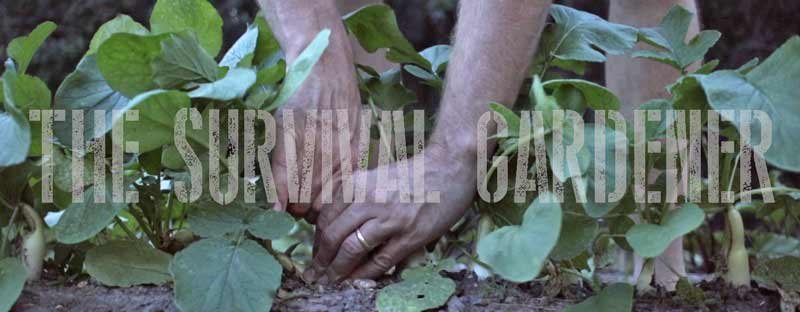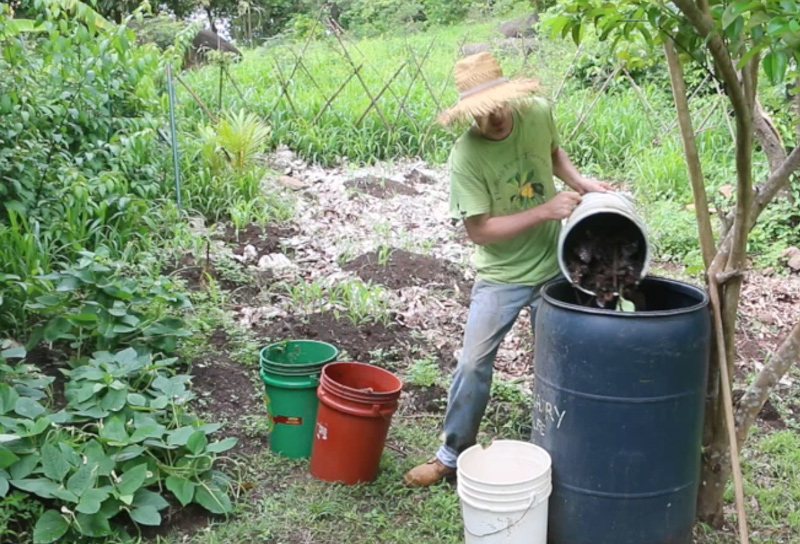As shared in my book Compost Everything, this method of feeding plants allows you to stretch fertility a long, long way and re-use “waste:”
Many people have written in to say how much they appreciate this simple method for creating liquid plant fertilizer.
As Gardener Earth Guy commented on the video:
“This is the absolute best garden trick I’ve learned in a long time. My banana have gotten giant, sweet potato have rope vines, and loquats are getting giant. What doesn’t get a chop n drop goes in the bin.”
You can throw in weeds, fruit, kitchen scraps, urine, manure… just find organic matter and throw it in. I like a wide mix. This is a pretty simple batch, only containing moringa, compost, cow manure and urine. I did get some Epsom Salts after making the video and will throw that in next. A 55-gallon drum like this can easily feed 10,000 square feet of corn for a growing season. I know – I’ve done it!
It beats making “normal” compost and having to spread it all around.

